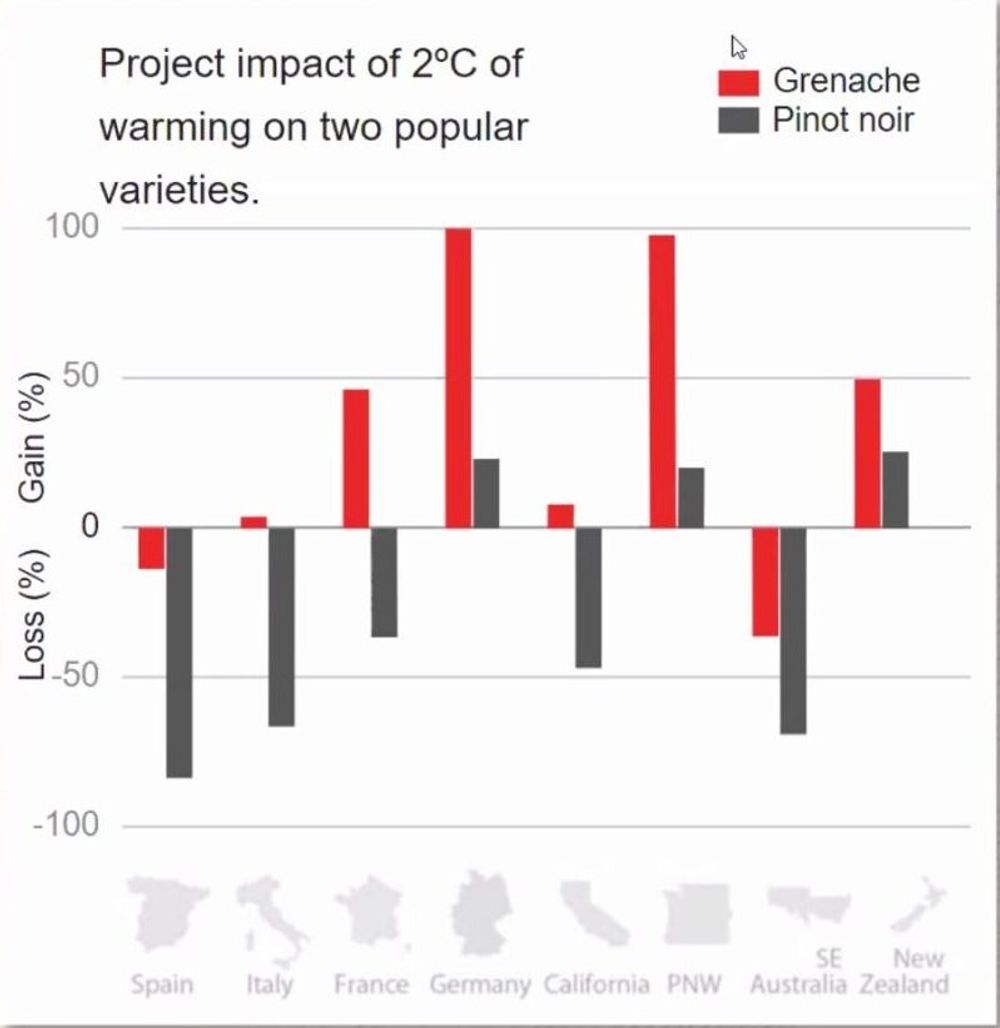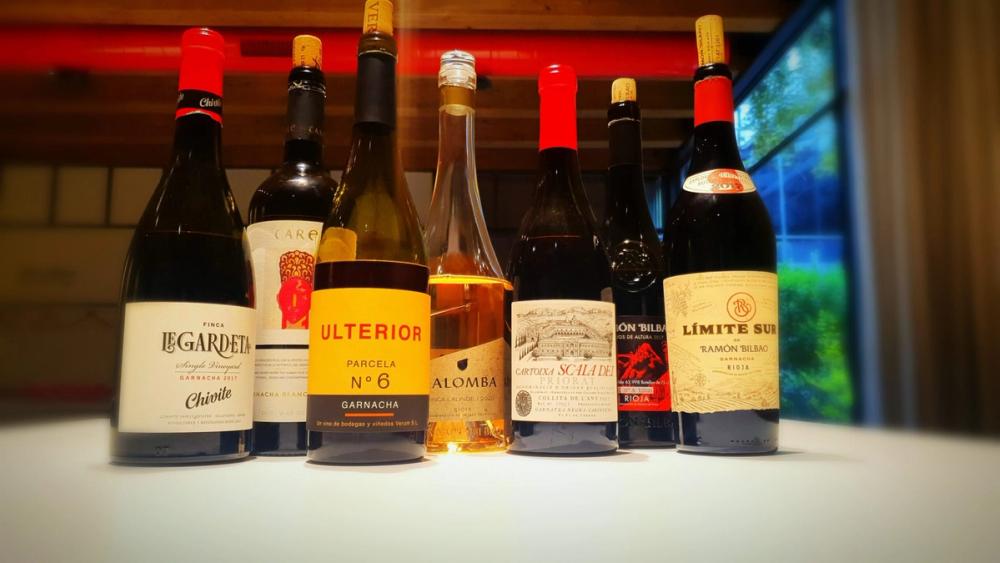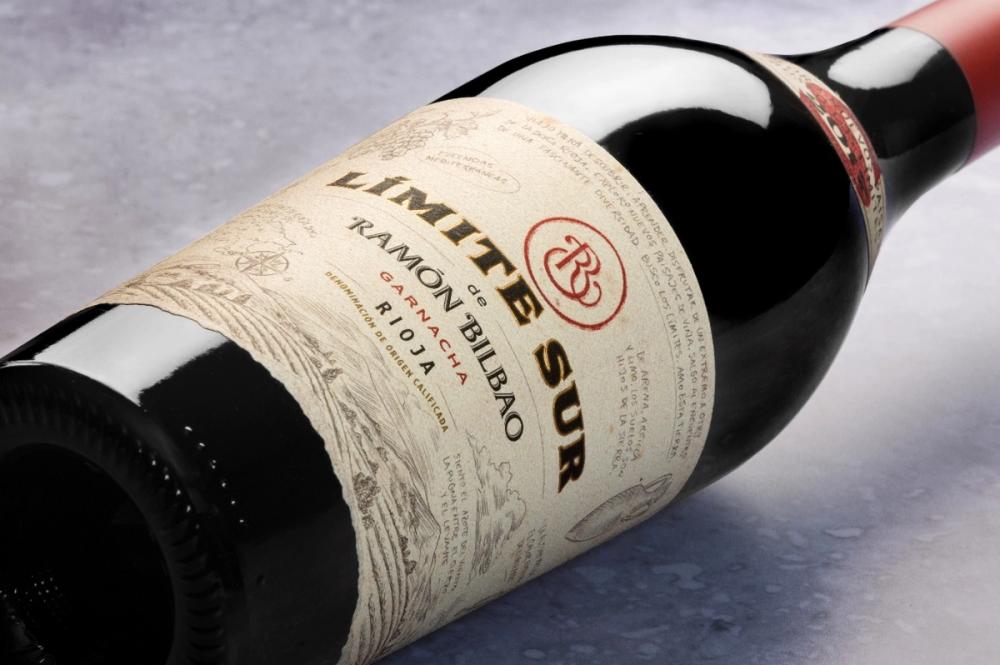“Garnacha has the ability to adapt to hot, dry conditions, is pretty drought-resistant and has naturally low pH levels making it a promising variety in the context of climate change,” writes Dean.
Spanish Garnacha is so on-trend right now, as is single varietal Grenache wherever it is being made – Swartland, South Australia, central coast California or back in Spain where the grape originated from (before being introduced into France in the Middle Ages), Grenache is experiencing a renaissance, with a particular buzz around ‘new style’ Grenache where the wines are made as a single varietal, and often with modern winemaking styles more suited to the grape.
A masterclass earlier this year from Ramón Bilbao’s Spanish Wine Academy that focused on Spanish Garnacha, has set off a chain of similar masterclasses examining the grape and its new manifestations in other countries (most recently on new wave Grenache in Barossa and McLaren Vale). The Spanish Wine Academy masterclass was chaired by Spanish wine expert Ferran Centelles, Enotria&Coe’s Peter Wallbridge and Ramon Bilbao’s Rodolfo Bastida, seven wines were presented, four with 100% Garnacha Tinta and three blended with Viura, Tempranillo and Cariñena.
How Garnacha got its image problem

Before the tasting we learned how Garnacha developed its image problem.
Because it is a vigorous variety that produces a medium to high yield, quantity over quality was often the path it trod. It is also susceptible to coulure, which is a failure of grapes to develop after flowering leading obviously to lower yields. To solve this the high-yielding Clone 70 was developed in France, which did not have the coulure problem and could double production. But it was difficult to work with in Spain and the grape was abandoned there after the 1970s.
The grape’s thin skins led to its nickname of ‘Pinot Noir of the South’, and also a lack of tannins resulting in fruit-driven wines lacking in structure. Winemakers compensated by using oak which caused further issues because it is a grape prone to oxidation, and ended up using it largely as a blending component. A grubbing programme to replace Garnacha vines with international varieties did not help.
This explains why, even with the new-found interest in Garnacha and recent replantings its 163,000 hectares worldwide is still on a downward trajectory – it has fallen from such a great height.
But as the wine world is discovering, with the right winemakers and styles of winemaking – low-temperature vinification, infusion, whole bunch fermentation, less crushing, and ageing in used foudres and concrete eggs – Garnacha’s fruit expression and terroir-driven flavours are enhanced and better expressed, with a trend towards a more transparent, floral style of wine.
Beyond wine styles, though, it is another aspect of the grape which will see it increasingly flourish – Garnacha has the ability to adapt to hot, dry conditions, is pretty drought-resistant and has naturally low pH levels making it a promising variety in the context of climate change.

It is predicted that with a projected rise of 2°C in average temperatures worldwide plantings of Garnacha will substantially increase in Germany, the Pacific North West, New Zealand and France; decrease substantially in South East Australia and decrease a smaller amount in Spain (where, with France 87% of Garnacha is grown).
Garnacha is an homogenous variety with an 85% similitude between wines despite the high number of clones and winemaking styles. Despite that it has the ability to ‘transmit terroir’ which is why throughout Spain Garnacha has different characteristics depending upon the region it is grown in: Aragón’s wines are more floral, vegetal with some preserved fruit characteristics; in Navarra the wines are more vegetal, with fresh fruit and spice; in Catalunya the wines are coloured and fruitful.
Ferran Centelles said only half-joking that Garnacha was an intelligent grape where Tempranillo was stupid…
Sampling seven different Spanish Garnacha styles

Lalomba, Finca Lalinde 2020
DO Rioja: Garnacha 90% Viura 10%. 520m altitude 5 ha vineyard in Monte Yerga, bush vines planted in 1976. Only the first pressing used, cold maceration on lees for three days, five months in concrete with lees contact. 13% ABV
When Ramón Bilbao purchased 90 ha on the Sierra de Yerga in Rioja Oriental the aim was to make a red wine, although the first wine out of the blocks is this premium rosé. Rosé made from Garnacha is a very old drink in Spain and this is a traditional blend with 10% Viura, which makes a softer style of rosé which, through its cold ferment embraces the fruit and aromas rather than chasing the colour. The concrete tanks also allows the wine a nice slow evolution, and gives it texture and breadth on the palate which allows it to have many gastronomic uses. Lees stirring is used to give the wine body, although this is balanced by bright acidity, focused with attractive red berry fruit. Nice yoghurt note on the finish.
Ulterior Parcela No.6 Garnacha
DO Castilla-La Mancha: Garnacha Tina 100%. High density planted vineyards on shallow rocky limestone soils above a chalky, compressed stone. 50% is fermented in whole clusters, the rest de-stemmed. Fermented separately in 5,000 litre stainless steel tanks; matured in earthenware tinajas for 11 months. 13.5% ABV
Elías López Montero is one of the fast-rising stars of the Spanish wine scene, planting late-ripening grape varieties at his family estate in La Mancha – the ‘frying pan’ of Spain. By doing so his fruit avoids the intensity of the summer heat, has a natural freshness and means he can make the wines with minimal intervention – overall it is effectively a way of future-proofing his vineyards against climate change. The style is transparent, fruity with intense strawberry and cherry flavours, a hint of white chocolate, very ripe but clean, pure and refreshing acidity.
Care, Garnacha Nativa, 2018
DO Cariñena: Garnacha Tinta. Fruit comes from 60 year old vines, planted densely at 14,000 vines per hectare, a widely planted grape in this region. The vines are 450-700 metres high on rocky soil with slate, quartz and clay. The area is high on sunshine and high winds and low on rainfall. The fruit is harvested at night for freshness, crushed and fermented at low temperature. 14.5% ABV
Because Garnacha doesn’t have thick skins it is prone to oxidation – but with lees stirring you can manage oxygen – on the high-toned nose there’s a real presence of cocoa powder and chocolate with a minty lift, fruit-forward and tasty, intense, creamy. Lovely texture with Booster Rouge’s nano-proteins giving volume in the mouth. Amazing value at £11.95.
Chivite, Finca Legardeta, 2017
DO Navarra: Garnacha. Legardeta is part of a 150 hectare site, 4-600m high with Chardonnay growing on the North-facing slopes and Garnacha on the South-facing slopes. The fruit is hand-harvested, fermented in large stainless steel vats and then matured for 12 months in French oak. 14% ABV.
Ferrán Centelles explained that because Navarra is such a large region with both Atlantic and continental climates it is hard to generalise about the Garnacha that is made there. “The North of Navarra is like Rioja with its soil and climate whereas the South of Navarra is more like Aragon, but this is a delicate Northern style… classic Chivite,” he says. Garnacha has never been a priority for Chivite, but this, even with its straightforward winemaking is complex, interesting and age-worthy; they still have to do green harvesting to get concentration in the fruit. The wine is elegant, has a lean edge, with a touch of liquorice on the finish.

Ramón Bilbao, Límite Sur, 2017
DO Rioja: Garnacha Tinta. From North-facing vineyards 5-600m high up in the Sierra da Yerga, where there is an Atlantic-Continental climate – the extremes of the Rioja region. The wine is fermented in concrete with some 10% whole bunch to add freshness and tannins. 30% of the wine is then aged in 2000-litre amphora, 600-litre barrels and concrete. The wine is then blended and aged in 225-litre barriques for ten months. 14% ABV.
Potent, racy, smooth, so drinkable and on-trend. One of the Academy team remarked: “There’s just so much love on the palate with this wine.” Ripe, well balanced, broad, but with layers of flavours, you pick up red berry fruit but also black fruit with dark overtones, having said that it is fresh with lovely acidity (retained by the percentage of the wine that is aged in concrete) and a good degree of texture. Rodolfo added that the estate is to do a wine of this style using Tempranillo.
Ramón Bilbao, Viñedos de Altura, 2017
DO Rioja: Garnacha Tinta 50%, Tempranillo 50%. The Garnacha comes from Rioja Oriental and the Tempranillo from Rioja Alta both vineyards at 700m, both wines are vinified separately for 10 days the Garnacha slightly cooler to keep the floral characteristics, a 7-10 day maceration follows and spontaneous malolactic fermentation into new French oak – the Tempranillo is aged in 225-litre Bordeaux barriques and the Garnacha in 500-litre barrels with continuous lees contact. 14% ABV.
The perfume of the Garnacha and the body of the Tempranillo work very well together with a fruit-forward, wild blackberry-style wine. The acidity became a subject of debate with Ferrán Centelles asking why it was that, with the high acidity evident in this wine, Garnacha is considered to be a grape with low acidity. Rodolfo Bastida explained that you get high acidity when you keep the yield low “But with a high yield the acidity will go down quickly” he says.
Scala Dei, Cartoixa, 2016
DO Priorat: Garnacha Tinta 75%, Cariñena 25%. The fruit for this blend comes from 60 year-old vines grown 500-800m up on terraces and the traditional ‘costers’ which are slopes with licorella slate terroirs. The fruit is crushed and fermented separately by plot, in cement tanks. There follows a three week maceration to maximise texture and body, the wine is then racked into large French oak barrels where it undergoes malolactic fermentation, and spends 18 months. 15% ABV.
The Garnacha grown on high altitude clay soils ripens slower, the Garnacha grown on licorella soils has to be de-stemmed. This wine is made in an oxidative style, it’s medium ruby to look at, has a lovely purity of fruit on the nose; on the palate there’s a tutti-frutti quality but it is still fresh, mineral with great texture.
The Spanish Wine Academy is an initiative by Ramón Bilbao – which is a supplier partner of The Buyer. To discover more about them click here.










































